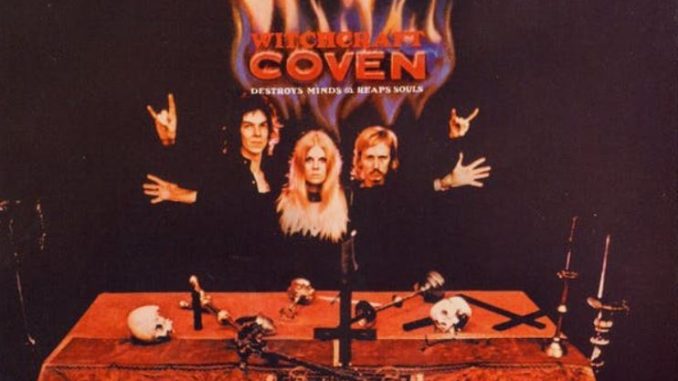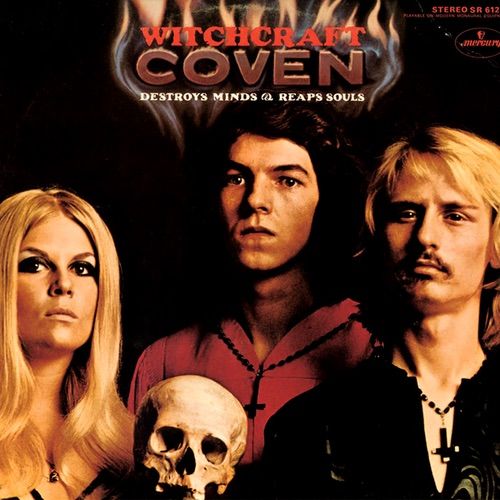
As Halloween is approaching, it is only fitting that we take a closer look at a band of a certain notoriety to match the spirit of Hallow’s Eve.
The perception of what has been considered “dangerous music” has changed over the years. Back in the 1980s, Heavy Metal bands in particular featured occult imagery, and there wasn’t a more satanic album than Mötley Crüe’s Shout At the Devil. Ozzy Osbourne was known as the Prince of Darkness himself. Ozzy and Judas Priest had to go to court to defend themselves against alleged hidden messages in their music. There was a war on heavy metal in the 1980s, particularly in America. For every concerned parent or politician, though, there were thousands of delighted kids supporting their favourite bands, revelling in the thought that their music was somewhat dangerous.
In the 1970s, dangerous music was not yet big politics. Young music fans still had to contend with concerned parents/authority figures who had their own understanding of things. KISS was famously said to be an acronym for “Knights In Satan’s Service.” Gene Simmons was “the Demon.” And bands with names like Black Sabbath? That definitely spoke for itself.
The 1960s were mostly tame by today’s standards. The Rolling Stones do not seem as dangerous any longer, do they. We can snicker at the notion that The Beatles were ever considered long-haired and a corruptive influence. Or Elvis shaking his hips in the 1950s, to go even further back. The element of danger has always been present in rock’n’roll. Funnily enough, most of these “dangerous” bands seem to become part of the establishment as the decades go on.
Some bands were born just a little more dangerous than others, though, and never lost that edge. But they may have been more underground and gotten away with more – until the press took notice.
Enter the band Coven. Formed in Chicago in 1967, their classic line-up was composed of Jinx Dawson (vocals – the one constant member and a practicing witch), Greg Osborne (bass), Chris Neilsen (guitar), Rick Durrett (keyboards) and Steve Ross (drums).

Coven are known for their occult lyrics, and were wildly ahead of their time in how far they would take this on record and in their live shows. They performed in ceremonial robes and included chanting and Satanic prayers as part of their show.
These days, we can hardly imagine a rock show where people don’t flash the “devil horns” symbol with their hands. It’s synonymous with rock’n’roll. Back then, however, it almost seemed downright dangerous that Jinx Dawson would begin and end each of their shows with them. She did not do it because it was rock’n’roll. Her usage came straight out of the occult.
Coven are largely recognised by metal fans/music historians as being the band that first introduced the “devil horns” to rock/metal pop culture. Ronnie James Dio may be the guy who brought them to the masses, but he was not using them on a stage in 1967. We can see Coven using them in images included on their debut album.
In 2017, Gene Simmons famously claimed that he was the first person to use the ‘devil horns’ in rock’n’roll and talked about trademarking it. Jinx Dawson was asked for a comment, and posted the following on Facebook.
Coven have released a number of albums over the years. The best and most notable one is their debut with the very dramatic title Witchcraft Destroys Minds & Reap Souls (1969). The music on the album could be considered a mixture of early hard rock with strong, melodic vocals and psychedelic and acid rock influences. What made that album (and the band) so distinctive was the heavy emphasis on spiritual and/or diabolical subject matter.
One of the best songs on the album is a good example – The White Witch of Rose Hall is based on the story of Annie Palmer and one of the most haunted places in North America; the old Rose Hall plantation, and all the heinous acts that made it so.
Other titles include Black Sabbath (named so before there was a band of the same name), For Unlawful Carnal Knowledge, Pact With Lucifer, and the minor hit Wicked Woman which they were even asked to perform on TV.
The album concluded with a 13-minute track of chanting and Satanic prayers called Satanic Mass, described as “the first Black Mass to be recorded, either in written words or in audio.” The use of Latin phrases (such as “Ave Satanas” (Hail, Satan)) was also a first in occult rock music. This aspect was definitely picked up by Black Metal bands a couple of decades later, to the point where it today has become the norm.
The album was recorded during February 1969 and released the following summer (exact date unknown). It had moderate local success. It got some unwanted publicity the following year (March 1970) when Esquire Magazine wrote a piece called “Evil Lurks In California,” which linked counterculture interest in the occult to Charles Manson and the Tate-La Blanca murders, while mentioning the Witchcraft album and its Black Mass ritual track especially. Those connections were obviously constructed for the benefit of the article, but it was still enough to make Mercury withdraw the album from circulation.
Bad publicity is however still publicity, and as word spread it built a solid cult following which has given the album sporadic re-releases over the years. It remains a classic of its genre, and in many ways set groundbreaking trends for later rock bands.
Witchcraft Destroys Minds & Reap Souls is obviously not the only album Coven released, but it is the one they are remembered for – and rightly so, as it is by far the best one. The band was pressured into stylistic compromise on the self-titled Coven (1971) and Blood On the Snow (1974), and took an extended break in 1975.
They picked up where they left off again in 2007 with Jinx at the helm. That was also the year the debut album finally got its official CD debut after years of unlicensed versions being the only option. The post-reunion years has yielded the albums Metal Goth Queen: Out of the Vault (rarities collection, 2008), Jinx (2013), and the EP Light the Fire (2016).
Their first ever live performances in Europe (including the Norselands) happened in April 2017. And what can I say? The devil horns are still there, the chants are intact, and they still don the robes.
Happy Halloween to one and all!

Facebook Comments